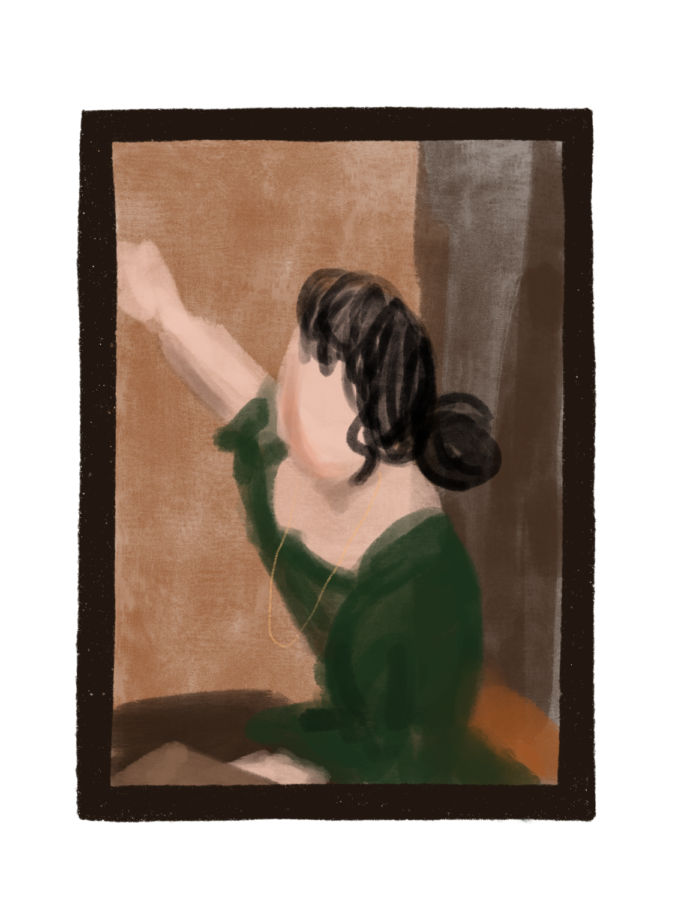Women carve their own places in art history
Artemisia Gentileschi, the most celebrated female painter of her time, fought for women’s rights and paved the way for feminist artists who came after her.
April 13, 2023
Art has been around for as long as the human race. From cave paintings to AI compositions, art is a part of every era of our history across the globe. However, as in all other areas of human civilization, women have long been kept out of and neglected in the field of art.
For hundreds of years, art forms and techniques such as painting and sculpture were kept to a select few, passing from master to apprentice in guild systems and academies. This made it very hard for women to receive formal training and break into the art world, unlike other areas like literature where less dependence on others was required. “The women who have risen to the top in the art world were fighters. They were so skilled they couldn’t be excluded,” sophomore Caroline Kaye, an art history student, said. In periods such as the Renaissance, one of the only ways that women could achieve success as artists was if they were born into artist families, as this was one of the only ways to receive formal training as a woman.
Artemisia Gentileschi is one of the earliest known examples of female artists that achieved major success in the seventeenth century. She is well-known for her unique Baroque-era interpretations of oft-painted biblical scenes, including “Madonna and the Child,” “Bathsheba,” and perhaps most notably, “Judith Slaying Holofernes.” This painting depicts Judith, an Israeli widow, beheading Holofernes, an Assyrian general who is besieging her people. Gentileschi painted many other scenes that portrayed female emotion and experiences, and eventually she became the first woman to enter the Academy of Art and Design in Florence.
A female artist who is less well-known, but still incredible is Harriet Powers. Powers was born a slave in Georgia in 1837, but was emancipated with her family after the Civil War. She was known for her quilting, which she exhibited at state fairs. These quilts told Bible and folk stories that had been passed down for generations, as well as astrological events. Her technique was called applique, in which patches of material are put together to create a larger piece. Newspapers at the time labeled her as “ignorant” and “illiterate.” She was, in fact, literate, and turned the stories she read into works of art.
Other impactful representations of women in art can be viewed throughout history. Botticelli’s “Venus,” which was painted in 1485, has come to represent female beauty and ethereality, and is recognizably by many. It is also very representative of early portrayals of women in art. Many early works of art such as paintings and sculptures portrayed women in the nude as objects of desire. Attention was drawn to this in 1989, when the Guerrilla Girls, an anonymous group of female artists and art-world professionals, distributed posters in New York entitled “Do Women Have to be Naked to get into the Met?” These posters shared the statistic that less than 5% of the artists in the Modern Art section of the MET were female, but 85% of the nudes were female.
Although these posters were made over 30 years ago, the sentiment still rings true. Julia Chang, a sophomore currently taking art history, says only “a small portion of the works we look at were made by female artists.” According to the Smithsonian, works by women represent only 14% of exhibitions in 26 major American museums. Anjana Tangirala, another sophomore enrolled in art history, said “In class, barely any of the artists we’ve looked at so far were female, even going closer to the modern day, and anytime we do see a female artist it’s kind of treated as a novelty just because it’s so rare to see actual diversity.”
However, the rise of the internet as a means of sharing art has also led to significantly more inclusivity. There are many spaces online for artists who identify as members of different minority groups, and these spaces provide role models, mentors, and teachers for many young female artists. The internet also makes it much easier to find work made by artists of diverse backgrounds, and learn art techniques previously only obtainable to the elite few, through resources like YouTube videos or blogs that are accessible all over the globe.


